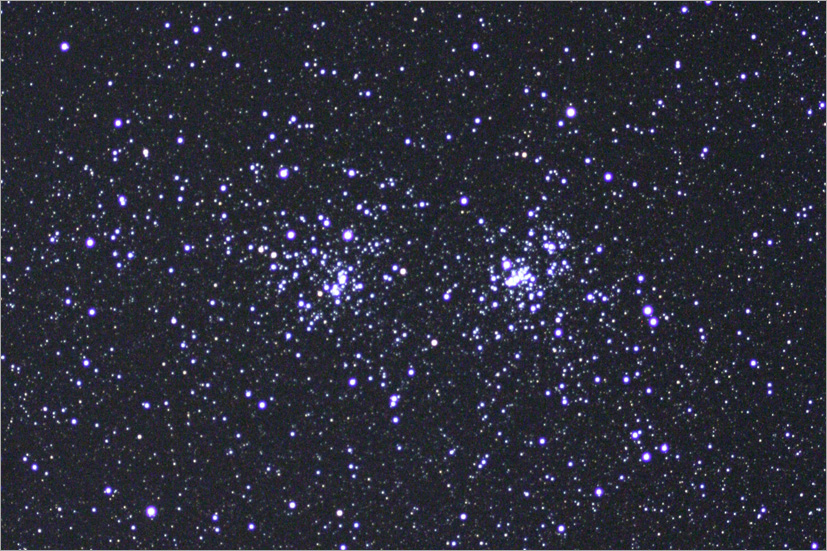
Prime-Focus Tracked
The Double Cluster
Star clusters are great targets. They are bright and can be shot from fairly bright skies without too much trouble.
Here, a 150 second exposure at ISO 1600 was used to record the faintest stars in the cluster. But the brighter stars were overexposed, so they have no color.
Shooting at a lower ISO with a shorter exposure would have recorded more of the star colors in this cluster.
|
|
The Double Cluster is easily visible to the unaided eye in Perseus from a dark-sky observing site.
When viewed in binoculars, a telescope, or a long-exposure photograph, their spectacular beauty is revealed.
Each cluster contains more than 100 stars, the brightest in NGC 884 being 8th magnitude, and the brightest in NGC 869 is about 6.6 magnitude. Each cluster is about 1/2 degree in apparent size.
NGC 884 is about 3.2 million years old and is 7,600 light years away. NGC 869 is about 5.6 million years old and is 6,800 light years away.
The Double Cluster is also known as h and Chi Persei. It was cataloged by Hipparcos in 130 B.C. Oddly, it was not cataloged by comet-hunter Charles Messier.
Image Data
- Lens / Scope: Stellarvue SV70ED ED doublet refractor
- Focal Length: 420mm
- F/stop: f/6
- Exposure: Single 150-second exposure
- Mount: Orion Sirius polar-aligned German-equatorial mount
- Guiding: None
- Camera: Unmodified Canon EOS 1000D (Digital Rebel XS)
- Mode: JPEG
- ISO: 1600
- White Balance: Custom, set on sky background
- In-Camera Noise Reduction: Off
- Filter: None
- Temp: 65F
- Start Time: 3:52 p.m.
- Date: June 28, 2009
- Location: Batsto, NJ
- Calibration: None
- Processing: Standard in-camera JPEG processing. Cropped and resized. No other adjustments.